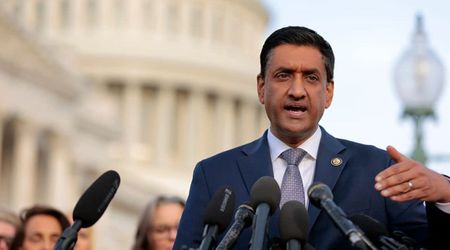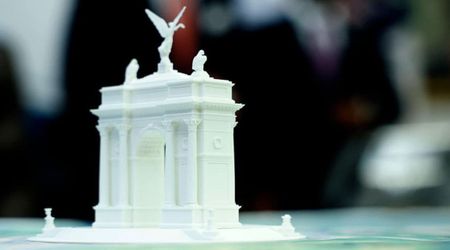Doctor suggests Trump’s recurring hand bruise may stem from IV drip amid rising health concerns

WASHINGTON, DC: Donald Trump showed up to the Commander-in-Chief Trophy ceremony on April 16, Wednesday, and once again, people weren’t just looking at what he said they were staring at his hand.
Specifically, a dark, blotchy bruise on the back of it.
The president has been spotted with similar marks before, and now they’re back - fueling fresh speculation about what might be behind them, reports OK Magazine.
"Donald Trump's Large Bruise Returns as Doctor Claims It Could Be 'From an IV Drip'" - OK Magazine #SmartNews https://t.co/0dSp23bm4G
— Sandra Rodkey (@SandraRodkey) April 18, 2025
Doctor says Trump’s recurring hand bruise may be from IV drip amid growing health questions
Dr Gareth Nye, a senior lecturer from the University of Salford, weighed in on the bruise's reappearance.
Speaking to the Daily Star, he said, “Bruising is much more common as you age due to the thinning of skin and weakening of blood vessels. As we age, even minor bumps can result in bruising and there's often very little underlying to suggest a health concern.”
Nye explained, “This is more likely if a person is on blood thinning medication or has been exposed to excessive sunlight. It could also be a completely benign condition called Actinic purpura, which is also caused by excessive sun exposure.”

Back in February, when the bruising first drew attention, Trump’s press secretary brushed it off with typical campaign-style flair. “He’s constantly working, shaking hands all day, every day,” Karoline Leavitt said. Trump himself claimed the bruises came from “shaking thousands of hands” after being named Time’s Person of the Year in December 2024.
Nye suggested the marks looked similar to bruises typically caused by an IV drip, yet there was “no evidence of IV usage or need.”
According to a statement released April 11 by Dr Sean Barbabella, Trump is in “excellent cognitive and physical health,” despite having actinic keratosis — sun-related lesions that are pre-cancerous but usually harmless.

The spots are considered pre-cancerous, meaning they have the potential to become skin cancer over time. However, the risk is relatively low. The Skin Cancer Foundation says only about 10% of cases actually progress to cancer.
Trump’s rosacea revealed in medical report
Donald Trump is back to touting his health - and this time, he’s got paperwork to prove it. The president recently announced he passed his physical exam “with flying colors,” and his team wasted no time letting the world know.
Press secretary Karoline Leavitt took to X to brag about Trump’s “excellent” mental and physical condition.
As promised on Friday, President Trump’s Annual Physical Examination Results: pic.twitter.com/skWfSRZ18N
— Karoline Leavitt (@PressSec) April 13, 2025
Under “Pertinent Past Medical History,” Trump is listed as having “well-managed rosacea.”
And that tiny line may explain more than just a few doctor visits. It could finally answer a question the internet has been asking for years: what’s really behind Trump’s ultra-consistent, orange-toned complexion?
Rosacea is a skin condition that causes persistent redness, especially across the face. Around 14 million Americans deal with it - but when you’re a public figure with cameras in your face 24/7, the urge to cover it up makes sense. According to dermatologists, many rosacea patients use thick makeup or tinted sunscreen to balance out uneven skin tones or visible redness.










